Disclosure: This article contains affiliate links. We may earn a commission from purchases at no extra cost to you, which helps our travel content.
There's something about Sossusvlei that triggers the investigative side of my nature. Perhaps it's the way the light plays detective across the ancient sand, revealing and concealing secrets with each passing hour. As someone who's traded crime scenes for landscapes, I can tell you with certainty: Namibia's iconic red dunes present a case worth solving for any serious photographer. My first encounter with these towering formations came after wrapping up a security consultation in Cape Town – a spontaneous detour that transformed my portfolio and perspective. The contrast between my urban Baltimore roots and these 80-million-year-old natural monuments couldn't be more stark, yet I felt immediately at home among them. This guide distills my three visits to Sossusvlei into actionable intelligence for fellow photographers looking to capture this otherworldly terrain.
The Essential Gear Dossier
When packing for Sossusvlei, think of yourself as preparing for an expedition rather than a vacation. The environment demands respect and preparation – two principles I carry over from my investigative work.
First, your camera setup needs careful consideration. I bring my full-frame DSLR as my primary body, paired with a versatile 24-70mm for most shots and a 16-35mm wide-angle for those expansive dune landscapes. The wide-angle becomes indispensable when you're standing at the base of dunes that tower over 300 meters high. The quality of light here demands equipment that can handle extreme dynamic range.
Dust protection isn't optional – it's mandatory. I learned this lesson the expensive way during my first visit when fine sand infiltrated my lens mechanism. Now I travel with a camera rain cover that works equally well against sand, plus multiple microfiber cloths and a rocket blower for sensor cleaning.
Tripods present an interesting challenge in Sossusvlei. You need something substantial enough to remain stable in potential wind, yet portable enough to carry across soft sand. My carbon fiber model with spiked feet has proven invaluable, particularly during blue hour and sunrise shoots when exposure times lengthen.
Finally, don't underestimate the harsh environment. The temperature swing between day and night can exceed 20°C (68°F). Pack multiple external batteries and keep them insulated against extreme temperatures. My investigative kit always included redundancies – your photography kit should follow suit.

💡 Pro Tips
- Bring twice as many lens cleaning supplies as you think you'll need
- Use silica gel packets in your camera bag to combat humidity changes
- Consider lens hoods essential, not optional – they protect against both flare and sand
Timing Your Shoot: The Golden (and Blue) Hours
In my former life as a PI, timing was everything – knowing exactly when to observe a subject made all the difference. The same principle applies to photographing Sossusvlei's iconic landscapes.
The conventional wisdom about shooting during golden hour holds especially true here, but with a critical distinction: you need to be in position well before the show begins. The gates to Namib-Naukluft National Park typically open at sunrise, which presents a logistical challenge. To capture the true golden hour, I recommend staying at one of the lodges within the park boundaries, like Sossus Dune Lodge. Yes, they command premium rates, but the investment pays photographic dividends when you're already deep in the dunes while day visitors are still at the entrance gate.
My most successful shoots have followed this timeline: depart accommodation 90 minutes before sunrise, arrive at chosen location 60 minutes before sunrise, set up equipment in blue hour light, shoot continuously through sunrise and approximately one hour after. The transformation of the landscape during this period is remarkable – the dunes shift from cool blue shadows to fiery orange ridges within minutes.
Equally compelling, though often overlooked, is the evening blue hour. Most tourists have departed by this time, leaving the landscape eerily quiet. The fading light creates a more subdued palette that reveals textures and patterns invisible during harsh daylight. During my last visit, I captured some of my most contemplative images during this period – the dunes becoming abstract sculptures against the deepening sky.
A practical note: always carry a headlamp with red light mode. You'll need illumination while setting up predawn shots, and the red light preserves your night vision without disrupting the experience of other photographers.
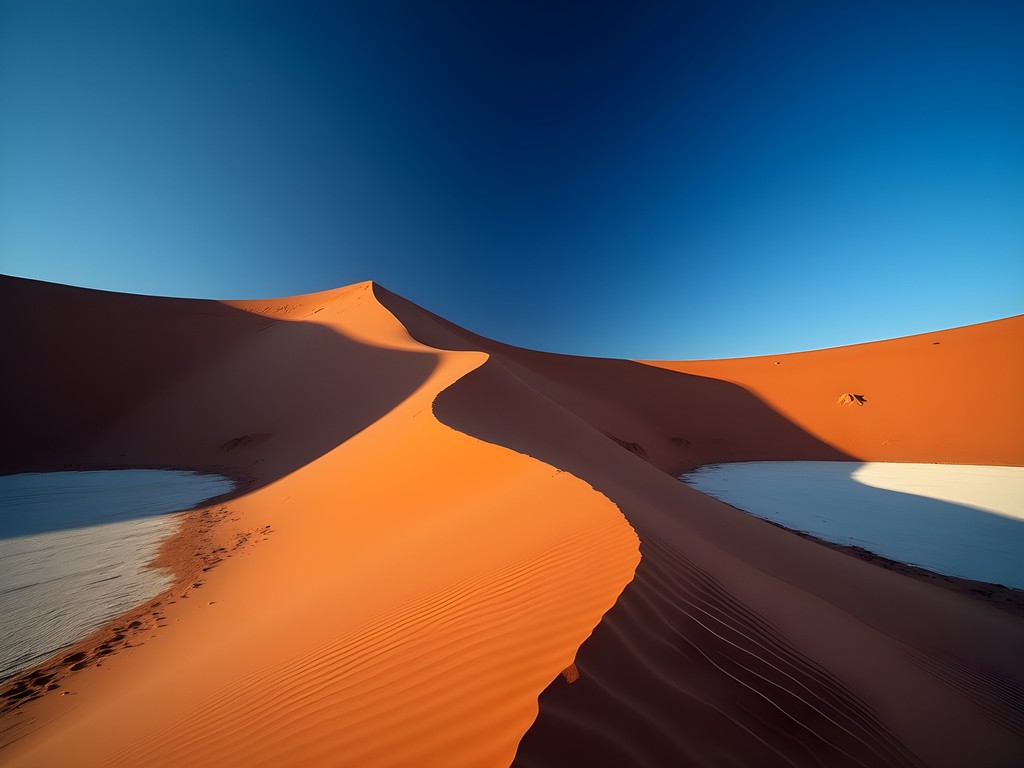
💡 Pro Tips
- Book accommodation inside the park to beat the entrance gate opening times
- Scout your morning locations the afternoon before
- Allow 30 minutes more driving time than you think you'll need – sand roads are unpredictable
Location Intelligence: Beyond the Obvious Shots
My investigative background has taught me to look past the obvious – a skill that serves photographers well in heavily photographed locations like Sossusvlei. While Dune 45 and Big Daddy attract crowds (for good reason), some of my most compelling images came from less trafficked areas.
Hidden Vlei deserves special attention. Located beyond the more famous Deadvlei, this clay pan requires an additional 40-minute hike that deters many visitors. The reward? An even more isolated collection of dead trees against a backdrop of towering dunes, often with no other photographers in sight. The solitude allows for contemplative composition without the pressure of others waiting for 'their turn' at a popular angle.
For bird photographers, the contrast between desert and oasis creates unique opportunities. During my second visit, I spent a productive morning at Sesriem Canyon, where pied crows and pale chanting goshawks provided dramatic subjects against the canyon walls. My telephoto zoom earned its weight that day, though I wouldn't consider it essential gear unless wildlife photography is your primary focus.
Another overlooked location is the area around Elim Dune, particularly in late afternoon. Its proximity to the park entrance means many photographers pass it by, heading for more famous dunes. However, its relatively isolated position offers unobstructed compositions without other dunes in the background – perfect for minimalist shots that emphasize texture and light.
When planning your movements, remember that driving on dunes is prohibited, and walking on many is restricted. Always follow marked paths and respect closed areas. My approach is to research thoroughly but remain flexible – some of my best images came from unexpected stops when the quality of light demanded immediate attention.
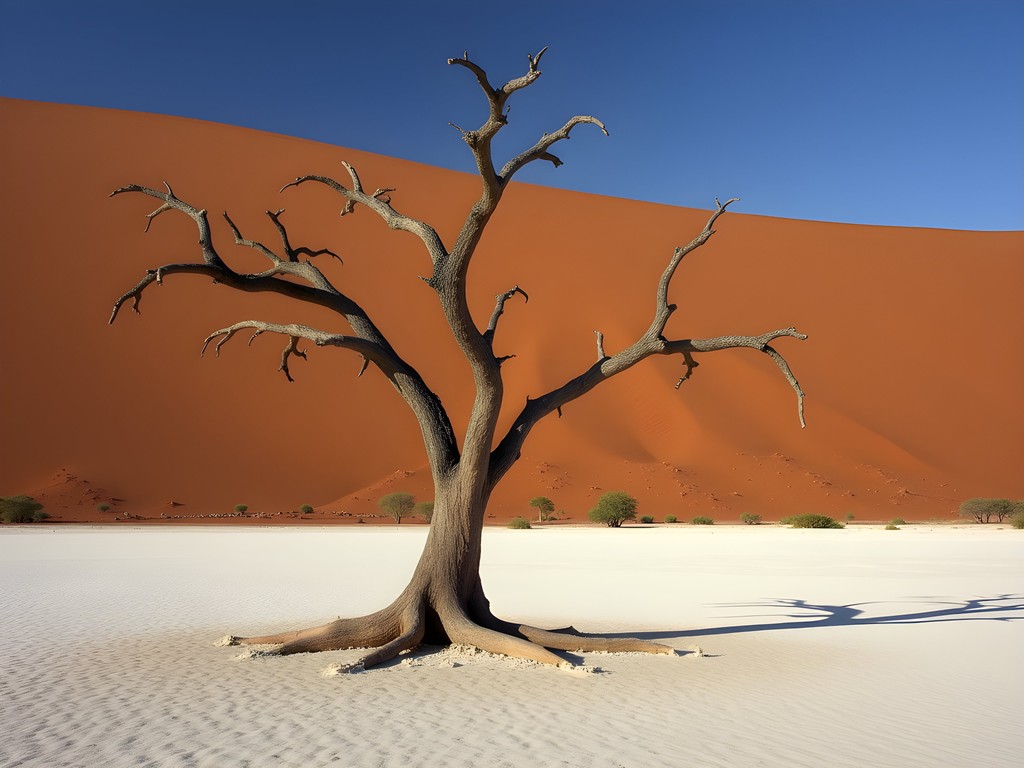
💡 Pro Tips
- Research the less-visited locations like Hidden Vlei and Elim Dune
- Mark potential shooting locations on offline maps before you arrive
- Allow time for spontaneous stops – the light changes quickly and can transform ordinary scenes
Composition Strategies for Desert Landscapes
Photographing Sossusvlei effectively requires a deliberate approach to composition. The landscape's minimalist nature can be deceptively challenging – without careful framing, images can appear flat or lacking focal points.
I've developed several reliable composition strategies through my visits. First, embrace leading lines – the sharp ridges of dunes create natural pathways for the eye. Position yourself where these lines converge or diverge dramatically. During my first morning at Deadvlei, I spent an hour moving just three meters in different directions until the dune ridgelines perfectly framed the dead camel thorn trees below.
Second, consider scale carefully. The massive dunes can lose their impact without reference points. Including a distant tree, vehicle, or occasionally a thoughtfully positioned human figure can transform an abstract landscape into one that communicates the true enormity of these sand mountains. On my last trip, I collaborated with another photographer, taking turns creating scale in each other's wide shots.
Third, don't overlook the importance of negative space. The clean lines and minimal elements of the desert environment lend themselves to compositions where emptiness becomes as important as the subject. Some of my most successful images feature small, isolated elements surrounded by expanses of untextured sand or sky.
For those interested in abstract photography, the interplay of light and shadow on the dunes creates endless opportunities. A polarizing filter can dramatically enhance these effects by managing reflections and deepening the rich red-orange of the sand. I've found that shooting perpendicular to the sun's position maximizes the three-dimensional quality of the dunes.
Finally, don't forget to look down. The patterns created by wind on the sand surface offer compelling macro opportunities that contrast beautifully with your wider landscape work. These intimate landscapes tell the story of the desert's constant transformation.

💡 Pro Tips
- Shoot the same composition at different focal lengths to capture both the grand scene and intimate details
- Use your shadow as a gauge for the best shooting angle relative to the sun
- Try vertical compositions to emphasize the height of the dunes
Post-Processing: Revealing the Desert's True Character
Post-processing desert photography presents unique challenges. The goal is enhancing the natural drama without crossing into unrealistic territory – a line I'm careful to maintain given my commitment to authenticity.
The primary challenge with Sossusvlei images is managing the extreme dynamic range. Even shooting in RAW with the latest sensors, you'll likely need to recover shadow and highlight details. My workflow typically begins with global adjustments in Lightroom, then progresses to targeted adjustments using luminosity masks in Photoshop for the most demanding scenes.
Color calibration deserves special attention. The iconic red-orange of Sossusvlei's dunes can easily shift toward an artificial-looking saturation in processing. I've found success using the HSL panel to selectively adjust orange and red hues, maintaining vibrancy without crossing into the unrealistic. Reference your field notes or memory of the scene – the dunes should appear rich but natural.
Dust spots become inevitable in this environment, regardless of your precautions. I budget extra time for spot removal when processing desert images. The Wacom tablet in my editing setup makes this precision work significantly more efficient than attempting it with a mouse.
For black and white conversions, Sossusvlei offers exceptional opportunities. The textural qualities of the dunes translate beautifully to monochrome, particularly when shot during side-lighting conditions. Consider creating separate color and black and white interpretations of your strongest compositions.
Finally, resist the temptation to over-sharpen. The natural softness created by heat haze and the organic curves of the dunes should be preserved rather than processed away. My approach favors selective sharpening only where needed – typically foreground elements and key textural features.
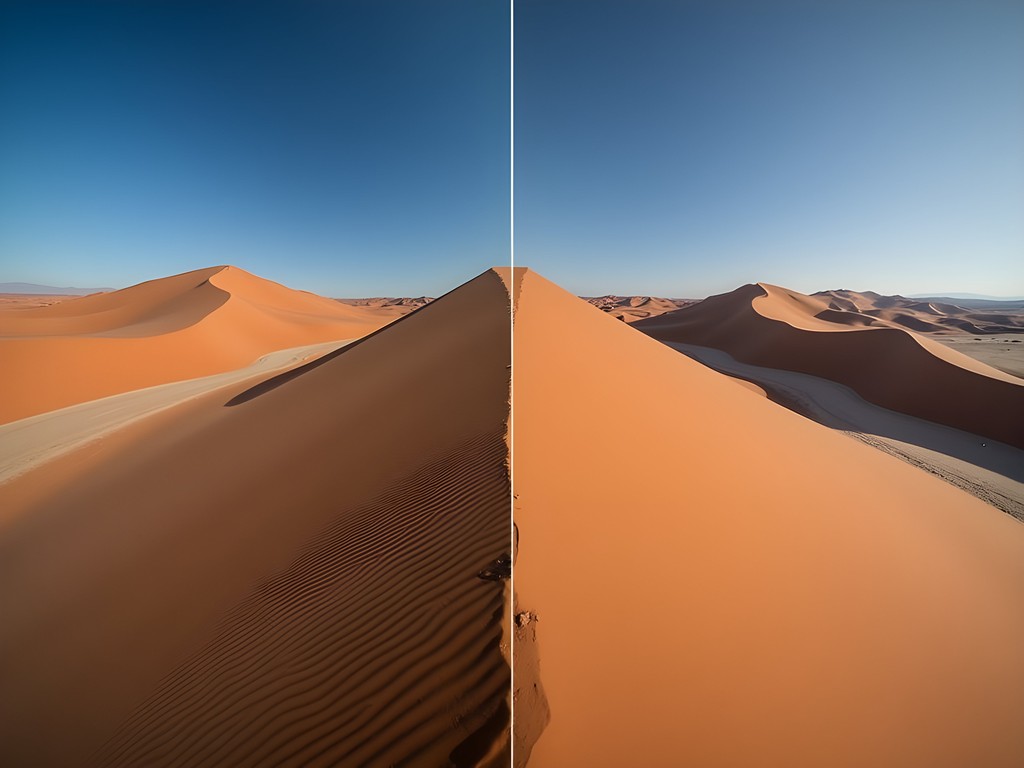
💡 Pro Tips
- Create virtual copies in Lightroom to experiment with different processing approaches
- Use luminosity masks to target adjustments to specific brightness ranges in the image
- Process images from the same time of day together to maintain consistent color treatment
Final Thoughts
Photographing Sossusvlei has transformed my approach to landscape work in ways I never anticipated. The discipline required – rising before dawn, methodically planning compositions, protecting equipment in harsh conditions – mirrors the precision I once applied to investigations. Yet there's something profoundly different here: the slow, deliberate pace allows for contemplation impossible in my former profession. Each visit has yielded not just stronger images but deeper insights. If you make this journey, prepare thoroughly but remain open to serendipity. The dunes reveal their secrets gradually, rewarding patience and persistence. I've documented crime scenes, surveillance operations, and high-security facilities, but nothing compares to the quiet thrill of capturing perfect light on ancient sand. When you return from Sossusvlei, you'll bring back more than photographs – you'll carry a newfound appreciation for Earth's most elegant expressions of time, wind, and light.
✨ Key Takeaways
- Stay inside the park if possible to access the dunes during true golden hour
- Protect your gear obsessively from the omnipresent fine sand
- Look beyond the iconic locations to find unique compositions
- Balance technical precision with emotional response to the landscape
📋 Practical Information
Best Time to Visit
May to September (winter) for cooler temperatures and clearer skies
Budget Estimate
$2,500-3,500 for one week (mid-range accommodations, rental vehicle, park fees)
Recommended Duration
5-7 days minimum to account for changing light conditions
Difficulty Level
Moderate - Requires Early Mornings, Some Hiking In Sand, And Adaptation To Desert Conditions

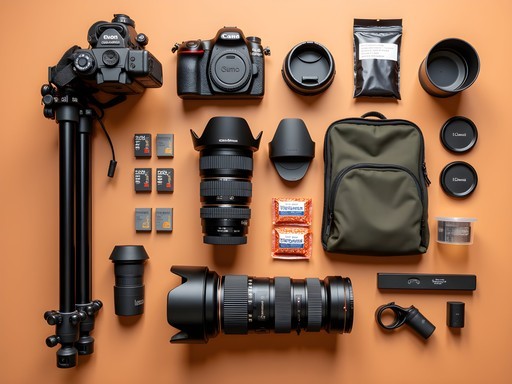

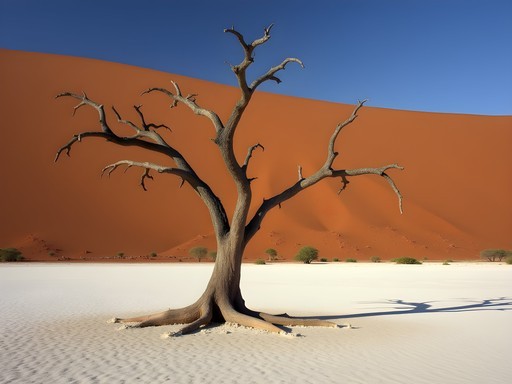
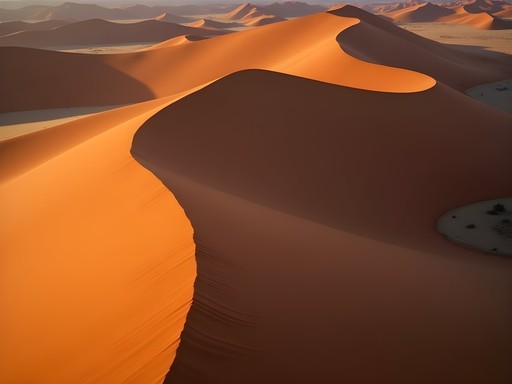
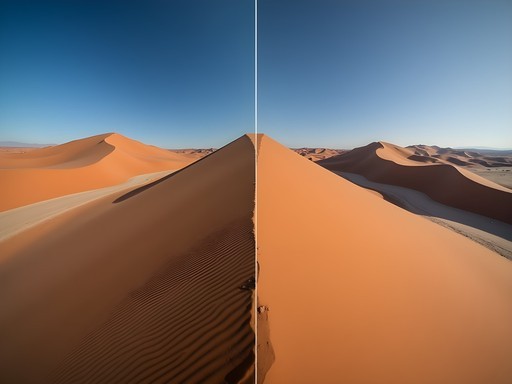


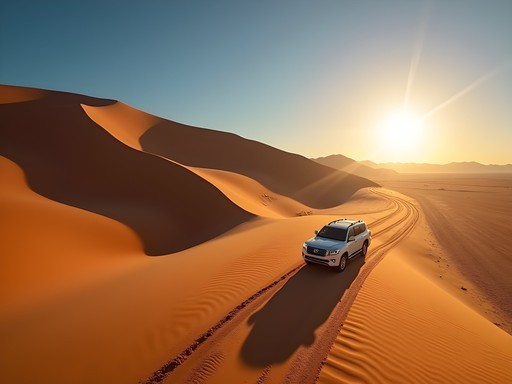
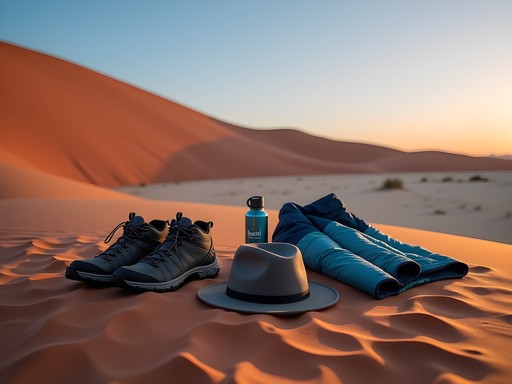






Comments
sunnytime
Just booked my trip after seeing these photos! Can't wait!
Megan Martin
Excellent breakdown of the technical challenges at Sossusvlei, Douglas. For anyone planning a photography trip there, I'd add that dust protection is absolutely crucial. I learned this the hard way when my sensor cleaning kit became my most used item! The extreme contrast range Douglas mentions is spot-on - bracketing exposures saved many of my shots. If you're staying multiple days (which I highly recommend), try dedicating one morning just to Deadvlei and another to the dunes themselves. The different lighting conditions each day can completely transform the landscape. Also worth noting that April-May often has clearer skies than the dustier winter months if you're hoping to incorporate night photography.
wanderexplorer
Great guide! I'm heading to Namibia in January. Did you find that a polarizing filter was essential for the dune shots? And any thoughts on staying at Sesriem Camp vs. driving from further away? Trying to maximize those golden hour opportunities without breaking the bank.
Douglas Murray
Polarizers are definitely helpful for enhancing the red color of the dunes and controlling reflections, but not absolutely essential. As for accommodation, staying at Sesriem Camp is worth every penny for photographers - you get access to the park before the gates open to the public, which means you can reach Deadvlei before sunrise. Those extra minutes make all the difference!
Haley Hamilton
Douglas, your composition strategies really resonated with me. I was at Sossusvlei last year and wish I'd read this before going! That pre-dawn hike to Deadvlei was brutal but so worth it. The way the first light hits those ancient trees against the orange sand and blue sky is something I'll never forget. I found myself constantly switching between wide angle for the vastness and telephoto to capture those gorgeous abstract patterns in the sand. Anyone heading there should definitely plan multiple mornings - my third day produced the best shots after I got more familiar with the landscape. Your tip about watching for small animal tracks is spot on - they added such interesting foreground elements to my compositions!
hikingnomad5914
Haley, did you climb Big Daddy dune? I'm planning to but wondering if it's worth lugging camera gear up there?
Haley Hamilton
Absolutely worth it, but be selective with gear! I only took my camera body, one versatile lens, and a small tripod in a backpack with LOTS of water. The panoramic views from up there are insane, but that climb is no joke in the heat.
moonmaster
The light on those dunes... just wow. Pure magic.
wavestar
Those red dunes are absolutely mesmerizing! Been dreaming about photographing Sossusvlei for years. Your shots are giving me serious wanderlust!
dreamvibes
Been to Sossusvlei twice now and your guide captures everything perfectly! For anyone planning a trip: don't forget that the dunes are just as spectacular at sunset as they are at sunrise, just with different lighting. And if you're not a morning person (like me), afternoon shoots can be just as rewarding. The ripple patterns in the sand really pop when the sun is lower. Also worth mentioning that a 4WD is essential for the last stretch to reach the vlei itself!
Douglas Murray
Great point about sunset shoots! The afternoon light has a warmer quality that really enhances those rich red tones. And yes, 4WD absolutely necessary unless you want a very long walk in the heat!
Hunter Thompson
Brilliant guide, Douglas! I spent a week shooting Sossusvlei last year and your composition tips are spot on. That section about finding less obvious angles really resonates - the dunes look completely different just by shifting your position slightly. One thing that saved my gear was my dust protection - that fine sand gets EVERYWHERE. Anyone heading there should also consider staying at Sesriem campsite inside the park if possible - gives you access to the dunes before the gates open to the public!
backpackzone
Just got back from Sossusvlei last month and it was INCREDIBLE! Wish I'd read this before going. The light changes so quickly there - we climbed Big Daddy dune for sunrise and the shadows were absolutely magical. One tip I'd add: bring more water than you think you need for climbing those dunes. The sand makes it way more exhausting than expected!
Hunter Thompson
Did you make it to Deadvlei too? Those dead trees against the white clay pan were the highlight of my trip!
backpackzone
Yes! Deadvlei was surreal - like walking on another planet. Got there mid-morning though, so missed the best light. Next time I'll follow Douglas's advice about timing!
oceanace
Those red dunes look unreal! Great shots!
Venture X
Premium card with 2X miles, $300 travel credit, Priority Pass